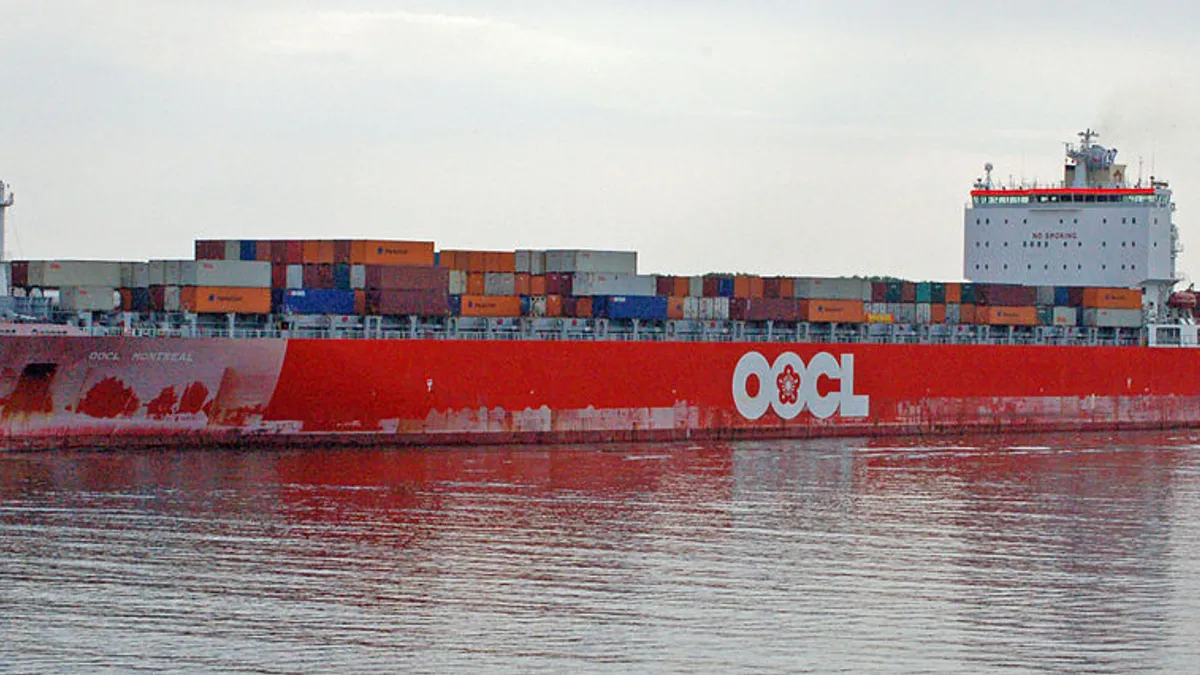Dive Brief:
- An excess of optimism fueled expectations of a rate hike on the trans-Pacific and Asia-Europe route, surprising many when it failed on September 1, JOC.com reported Monday. The longstanding excess of capacity is blamed for the failure, even as vessel orders have frozen and older ships have been scrapped.
- Hopefulness amongst carriers had been prevailing, as second quarter revenue and volume, combined with the emergence of the three shipping alliances, led them to believe that an increase in rates was likely.
- Industry intelligence provider SeaIntel argues that the General Rate Increase (GRI) failure should remind carriers that a true balance in supply and demand is unlikely to occur before 2019 or 2020.
Dive Insight:
Industry comebacks are possible, but patience is required, as often a tepid market must catch up with solid fundamentals.
As recently as late in 2016, Moody's maintained its negative outlook for the shipping industry, estimating that supply would still outpace demand in 2017. And although early 2017 saw the shipping industry actively consolidating, scrapping and idling in its effort to correct for overcapacity, in late August, both CMA CGM and MSC were reported to have signed letters of intent to order nine 22,000 TEU ships (CMA CGM) and 11 vessels of 22,000 TEU (MSC).
Clearly, shippers and freight forwarders believe carriers acted precipitously in ordering more ships. Further, according to Xeneta, despite recovery, the industry is moving more slowly than the asked-for rate increase support, which is in alignment with predictions issued by the IMF on global growth and trade impacting ocean freight prices.
As for the future of cargo freight prices, the impact made by new alliances and general momentum has yet to be fully realized.













